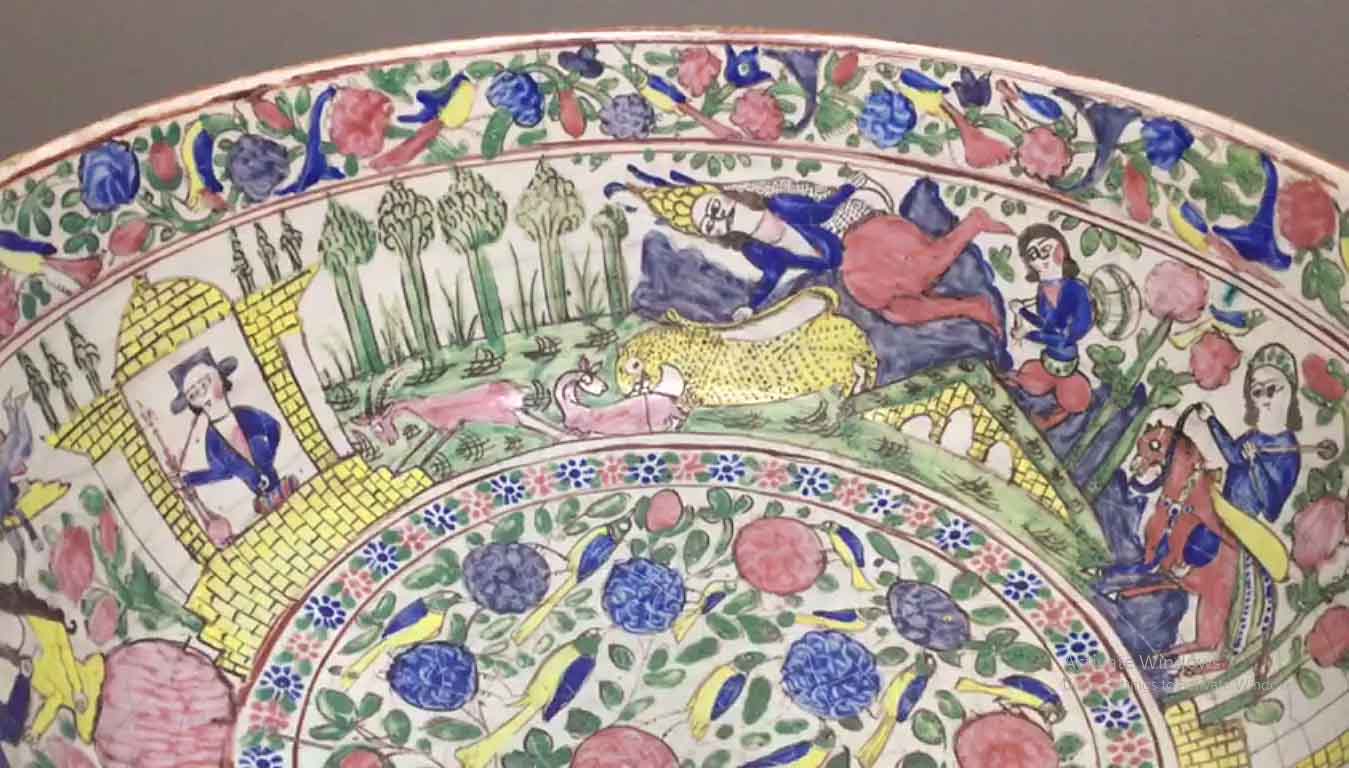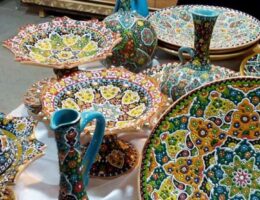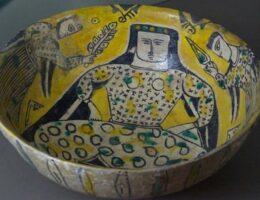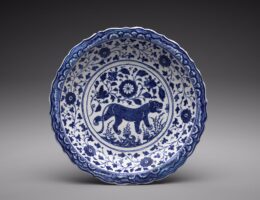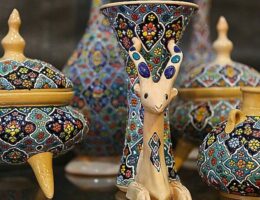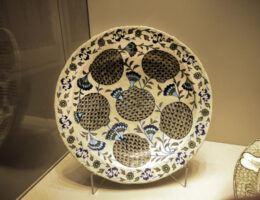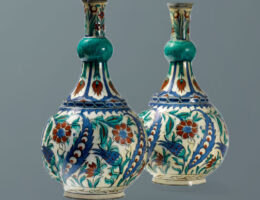IRAN ART EXHIBITION: POTTERY AS ONE OF THE TRADITIONAL IRANIAN HANDICRAFTS
Pottery is the craft or art of making dishes from clay by hand or wheels and the dishes made in this way are called earthenware. The earthenware pots which are made from different raw materials, mainly reddish brown clays or a mixture of Pottery and different materials with a lighter color, have different colors and, depending on taste of the potter or the clients, sometimes are finally painted with glazes.
Generally, in Iran, we can consider pottery as one of the main branches of traditional Iranian handicrafts, which has existed since the dawn of civilization and has undergone various changes and, in terms of development, innovation and decorations, it can be compared only with two countries of Greek and China. The period when earthenware containers were made is not known precisely; and, it has been predicted to date back from the eighth to the fifth millennium BC, but what certain is that some parts of the country including Baluchistan, Kurdistan and Gilan have been the main areas of the emergence of this craft.
Moreover, considering the emergence of painted pottery by the first inhabitants of the Iranian Plateau, it can be concluded that Iranians have excelled the other nations in this industry, and this invention might have been particularly invented by them.
Along with the rise of the Achaemenid Dynasty, the art of pottery went through profound transformations including creation of Rhytons and other containers of various shapes which became popular since this period.
During the Parthian period, the art of pottery was developed as the traditional and pure Iranian art and gradually spread from the Euphrates to China, from Siberia to India, and from the highland plateaus of Mongolia to Bosporus, as it is even assumed that this industry has expanded to China from Iran. Besides, it can be concluded by the excavations conducted in the Anahita Temple, located in Kangavar, that two groups of pottery dishes, bowls and jugs have been common in this era: unglazed pottery containers and a group of potteries covered with red, gray, green pea colored glazes, as well as alkaline glazes which was made for white earthenware.
IRAN ART EXHIBITION: In the Sassanid period, the art of pottery remained as it was in the Achaemenid period, and generally included bowls, jars, jugs, sculptures, thermoses, and earthen homunculus and sculptures as well as animals; and, the jars, jugs, and bowls were made from laterite with rough reliefs and carved, geometric and herbal decorations and sometimes decorated with ancient Pahlavi calligraphies. Glazed dishes with paintings of fish and cattle heads, decorated with rough motifs, were particularly made by potters of the Sassanid period and distinguish them from the Achaemenid and Parthian periods. Common motifs in Sassanid pottery, which have also been influential among the arts and works of the Islamic period, include different kinds of the first arabesque designs, winged animals, legendary birds, and the famous Sassanid eagle. Today, a number of earthenware found from different eras including Sassanid period are kept in the National Museum of Iran.
The impacts motifs, design, and glazing of Sassanid period on pottery of Islamic period resulted in decorating earthenware with the motifs previously applied on metal works, and lead to this false impression that these works have been made by Zoroastrians; therefore, a particular group of these earthenwares was called Gabri.
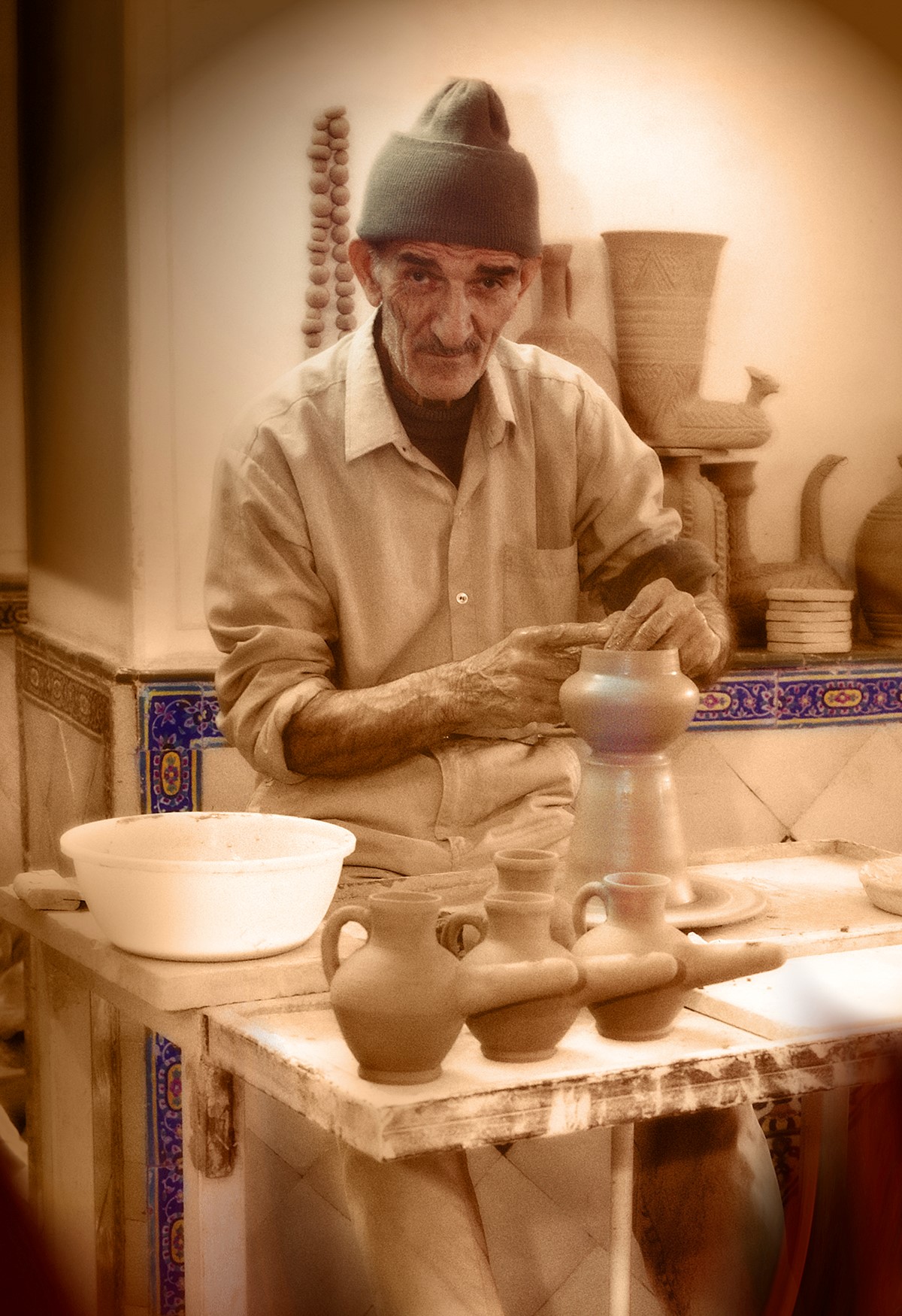
Seljuk period can be considered as the “Golden Age of Chinaware” in Iran, since in this period all the various known technical methods such as etching, relief, latticework, color engraving under or over the glazes, gilding, and enamel work were commonly adopted. In the Safavid period too, Shah Abbas the Great invited Chinese potters to train Iranian potters on porcelain industry.
IRAN ART EXHIBITION: Eventually, the entire technical progress lead pottery to be one of the organized professions as it has remained so from then on. Since the craftsmanship of ancient potters have been considerable both in technical terms and in terms of beauty of the products, today in some areas of Iran such as Kalporgan Village in Sistan and Baluchistan Province where pottery dates back to 3,000 years BC, motifs and making ceramics or earthenware pots are still carried out with the same old and traditional methods. In this area, men bring the mud from mines with donkeys, knead it with conventional fuels, bake the earthenware pots and sell various plain bowls, colorful jugs, water bowls, and other dishes in weekly markets. As per researchers, potters of areas such as Gilan, Sistan and Baluchistan, Hamedan, especially Lalejin and Shahreza village, link prehistoric pottery of Iran to today’s pottery of the country.
